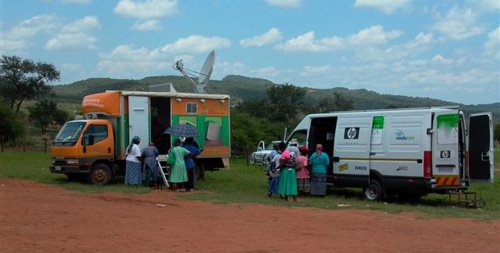
Where cellular coverage is not available (in most rural areas outside of South Africa) a satellite link will need to be established for both telephony and data transmission.
The current high cost of these services will significantly impact on both the nature and frequency of the Connect Africa service and it will be imperative to find a balance between demand and cost that will in turn ensure sustainability.
A key differentiator for Connect Africa is that unlike fixed satellite installations our mobile units will be traveling to areas where demand is sufficient to meet the cost. A significant amount of time will be required to initially identify mobile unit route plans and clever satellite solutions will need to be established and tailored to suit different market requirements.
It is for this reason that Connect Africa’s roll-out strategy across Africa will take into account existing cellular coverage, ICT/VSAT regulatory requirements, satellite service costs and the complexity of the satellite solutions available to us.
For example, DATASAT, in conjunction with IntelSat, will be supporting Connect Africa’s Pilot Project with the latest in satellite DVB (Digital Video Broadcasting) technology along with their new “SpeedyCell” GSM satellite system that enables standard GSM cell phones to connect to a Satellite Network.
If you have a satellite solution that you think can help us bring ICT to rural areas please do get in touch with Dion Jerling at
